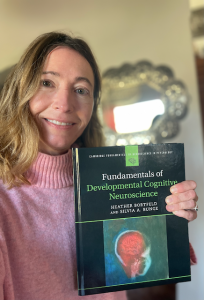Silvia, Kevin Weiner, and former postdoc Suvi Häkkinen recently published a paper discussing the relationship between functional connectivity and individual sulcal morphology in children and adolescents. The findings underscore the relevance of sulcal morphology in understanding how the brain functions. Read the press release here!
Full link to the press release: https://news.berkeley.edu/2025/05/21/are-groovy-brains-more-efficient/


